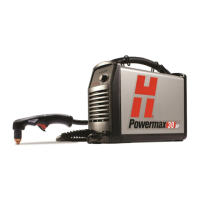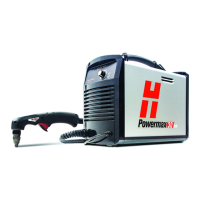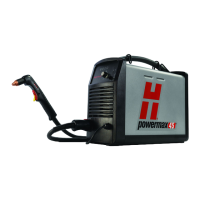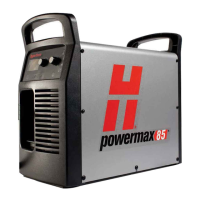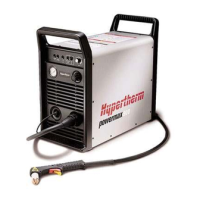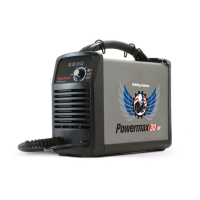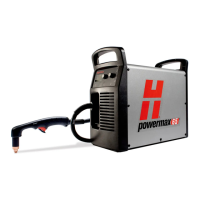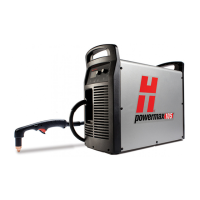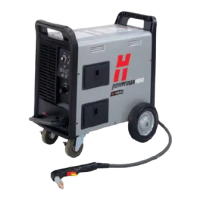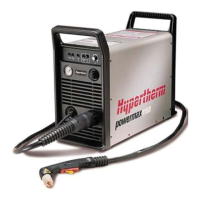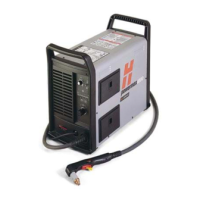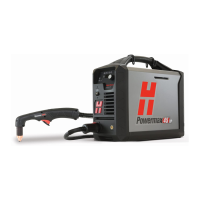1-4 Hypertherm
SAFETY
11/08
The plasma arc by itself is the heat source used for
cutting. Accordingly, although the plasma arc has
not been identified as a source of toxic fumes, the
material being cut can be a source of toxic fumes
or gases that deplete oxygen.
Fumes produced vary depending on the metal that
is cut. Metals that may release toxic fumes include,
but are not limited to, stainless steel, carbon steel,
zinc (galvanized), and copper.
In some cases, the metal may be coated with a
substance that could release toxic fumes. Toxic
coatings include, but are not limited to, lead (in
some paints), cadmium (in some paints and fillers),
and beryllium.
Gases produced by plasma cutting vary based on
the material to be cut and the method of cutting,
but may include ozone, oxides of nitrogen,
hexavalent chromium, hydrogen, and other
substances if such are contained in or released
by the material being cut.
Caution should be taken to minimize exposure
to fumes produced by any industrial process.
Depending upon the chemical composition and
concentration of the fumes (as well as other factors,
such as ventilation), there may be a risk of physical
illness, such as birth defects or cancer.
It is the responsibility of the equipment and site
owner to test the air quality in the area where the
equipment is used and to ensure that the air quality
in the workplace meets all local and national
standards and regulations.
The air quality level in any relevant workplace
depends on site-specific variables such as:
• Table design (wet, dry, underwater).
• Material composition, surface finish, and
composition of coatings.
• Volume of material removed.
TOXIC FUMES CAN CAUSE INJURY OR DEATH
• Duration of cutting or gouging.
• Size, air volume, ventilation and filtration of the
work area.
• Personal protective equipment.
• Number of welding and cutting systems
in operation.
• Other site processes that may produce fumes.
If the workplace must conform to national or local
regulations, only monitoring or testing done at the
site can determine whether the site is above or
below allowable levels.
To reduce the risk of exposure to fumes:
• Remove all coatings and solvents from the metal
before cutting.
• Use local exhaust ventilation to remove fumes
from the air.
• Do not inhale fumes. Wear an air-supplied
respirator when cutting any metal coated with,
containing, or suspected to contain toxic
elements.
• Assure that those using welding or cutting
equipment, as well as air-supplied respiration
devices, are qualified and trained in the proper
use of such equipment.
• Never cut containers with potentially toxic
materials inside. Empty and properly clean the
container first.
• Monitor or test the air quality at the site as
needed.
• Consult with a local expert to implement a site
plan to ensure safe air quality.
